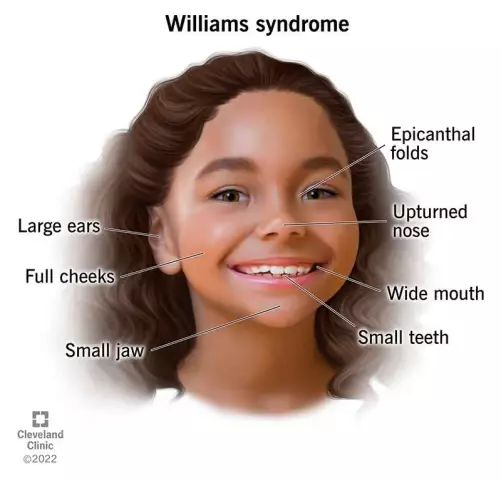- Author Rachel Wainwright [email protected].
- Public 2023-12-15 07:39.
- Last modified 2025-11-02 20:14.
Tietze syndrome

In the literature, Titze syndrome can be found under different names: perichondritis, anterior chest wall syndrome, costal chondritis, idiopathic costochondral pain syndrome, etc. However, they all mean a disease of the connective tissue, which manifests itself as inflammation of the costal cartilage in the upper sternum … Tietze syndrome is most often seen in adolescents between the ages of 12 and 14 and in adults between the ages of 20 and 40. As a rule, the defeat is one-sided, but in practice there are other cases. Despite the fact that Tietze syndrome is considered to be a relatively harmless disease that can go away without treatment, it often gives a person regular pain and discomfort in the chest area.
Causes of Tietze syndrome
The German surgeon Titze, by whose last name the syndrome of the anterior chest wall is named, was considered its main cause of insufficient nutrition, which leads to metabolic disorders (for example, to hypovitaminosis or calcium metabolism). Also, in his opinion, frequent diseases of the upper respiratory tract, accompanied by severe attacks of coughing, can provoke the disease.
In fact, the exact causes of Tietze's syndrome have not been established until our time, since costal chondritis is considered a rare pathology. Along with this, it is possible to identify several factors that actively contribute to the onset and development of this disease:
- Regular physical activity on the upper shoulder girdle;
- Constant physical activity on the chest;
- Periodic microtraumas of the chest, for example, bruises when practicing some combat sports;
- Diseases of the respiratory organs;
- Postponed infectious diseases;
- Allergy;
- Autoimmune diseases;
- Collagenosis;
- Arthritis;
- Arthrosis.
We can say that the cause of Titze's syndrome is often any disease that causes metabolic disorders in connective tissues and reduces the immunological properties of the human body.
Since the blood circulation in the cartilaginous tissue after surgery is impaired and it is more susceptible to infection, surgery in the chest area can also cause Tietze syndrome.
Symptoms of Tietze syndrome
Tietze's syndrome has no pronounced symptoms, so it is usually very difficult to determine: often doctors make a mistake with the diagnosis. However, some of the main symptoms of Tietze syndrome can be identified:
- Sharp attacks of pain in the front of the chest;
- Moving pain downward or to the left sternum;
- The center of pain is usually the fourth, fifth, and sixth ribs;
- With any movement of the body, the pain intensifies;
- With deep breathing, pain sensations also intensify and, conversely, at rest and with light breathing, they recede;
- When you press your fingers into the area of attachment of the ribs to the sternum, tangible pain is observed.
It should be noted that the last symptom of Tietze syndrome on the list is the most common symptom of the disease. If, on palpation, in the area of the junction of the chest and ribs, pain is not felt, the likelihood of this disease is extremely small.
Another characteristic symptom of Tietze syndrome is a slight swelling in the area of the affected costal cartilage. As a rule, it is 3-4 cm in size and has a dense surface. Any touch to this area causes pain in a person. If the patient has one of these basic signs, we can assume the development of Tietze syndrome.
In some patients, the above symptoms with costal chondritis are accompanied by shortness of breath, decreased appetite, insomnia, and tachycardia. Rarely, additional symptoms of Tietze syndrome are skin edema in the chest area and a local increase in temperature.
X-ray in the diagnosis of this disease makes little sense, since in the early stages it does not reveal the occurrence of costal chondritis. It is necessary only in order to exclude the presence of lung diseases or all kinds of oncological diseases during the examination. To determine Tietze's syndrome, it is recommended to undergo computed tomography, which is able to recognize the changes characteristic of the disease in the early stages.
Tietze syndrome treatment
Many experts agree that the full treatment of Tietze's syndrome is possible only with the help of surgical intervention. But subperiosteal resection, which is performed in such situations, is considered an extreme case, since costal chondritis often does not bother patients much even for decades. Some of them are not even aware of the existence of Tietze's syndrome, since no characteristic symptoms are observed.
That is why the treatment of Tietze's syndrome, as a rule, comes down to the use of the most common conservative methods:
- Local therapy using various ointments and gels with anti-inflammatory effect;
- Compresses with Dimexide;
- Physiotherapy and reflexology;
- Novocaine blockade of intercostal nerves;
- Injections of anesthetic with a steroid into the area of pain localization;
- Non-steroidal anti-inflammatory drugs and analgesics.
Treatment of Tietze's syndrome using such methods, of course, will not help to eliminate fibrocystic formation. However, these funds help to reduce swelling and inflammation, and also alleviate pain. On the other hand, Tietze syndrome is considered a chronic disease that, even if it disappears for a while, still comes back. Thus, side effects may arise from the constant use of anti-inflammatory and pain relieving medications.
Treatment of Tietze syndrome with folk remedies
Some traditional medicine recipes can also help with rib chondritis. The main folk remedies for the treatment of Tietze syndrome are:
- Healing baths;
- Broths;
- Compresses;
- Rubbing.
For a therapeutic bath, pour 300 g of pharmacy chamomile with 5 liters of boiling water, insist and strain for an hour. Pour the broth into a bath of warm water. It is recommended to take such a bath for 20 minutes every other day. Sage and fresh spruce branches are also used instead of chamomile.

Treatment of Tietze syndrome with folk remedies using decoctions is aimed, first of all, at improving blood circulation and increasing immunity. As a rule, medicinal components are used for decoctions such as:
- St. John's wort;
- Sage;
- Thyme;
- Yarrow;
- Juniper fruits;
- Nettle roots.
Compresses for Tietze syndrome are made from a decoction of rosemary, steamed lemon balm leaves or horseradish. A shawl or warm cloth should be tied over the applied compress.
Rubbing the ribcage with bear or pork fat is also helpful. Often, alcoholic tinctures of eucalyptus and birch buds are rubbed into the inflamed areas. After the procedure, cover yourself with a warm blanket to prolong the warming effect.
However, it should be remembered that before practicing the treatment of Tietze syndrome with folk remedies, you must consult your doctor.
The information is generalized and provided for informational purposes only. At the first sign of illness, see your doctor. Self-medication is hazardous to health!






